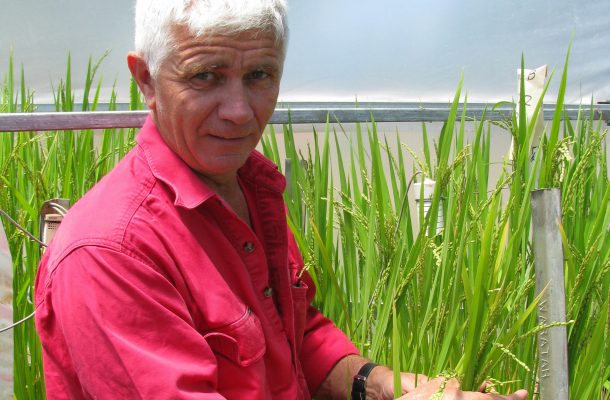The difficult balancing act in the Murray Darling Basin

The catastrophic fish kills recently in the Darling River system have laid bare the sobering reality of modern day management of an arid zone river basin in a continent which features such a highly variable climate.
The recent report by the Australian Academy of Sciences recommends urgent steps to improve water flows and quality in the river system but the reality of providing environmental water without causing detrimental effects elsewhere in the system, during periods of severe water scarcity, will not be easily achieved.
The 2012 Murray Darling Basin Plan is an extraordinarily complex framework developed to restore environmental outcomes in a river system where other uses for water are hotly contested, and too that extent, politically the Plan is an attempt to satisfy a number of diverse ideological views as to how water should be used in Australia.
How did we get to the Plan?
Over the past nearly three decades, water has evolved as arguably the nation’s most important natural resource. Oddly, prior to 1991, water use in the Basin states was a matter largely ignored by politicians until a 1000 kilometre-long blue-green algal bloom in the Darling River system refocused national attention of the consequence of the development of natural resources on the environment.
Between the 1991 algal bloom and the commencement of the Plan, bureaucrats and politicians spent an unprecedented amount of effort understanding the use of and extent of water used within the Basin, the economic and social impacts of water diversions, and the environmental consequences of diversions. The Murray Darling Basin (MDP) Plan was a directive of the Federal Water Act in 2007, and using the expertise contributed by people from many disciplines across the Basin, the MDB Plan was developed and agreed to in 2012.
However, like all complex plans, the MDB Plan has imbedded a number of outcomes that it needs to achieve, including improved riverine environmental health, as well as maintenance of the socio-economic viability of rural communities within the Basin.
The Australian irrigated agricultural industry located mainly in the Murray Darling Basin has grown over the past century to such an extent that it now supplies approximately 30 per cent of Australia’s agricultural GDP. Growth in this aspect of agriculture has resulted in the production of a diverse array of food products to both domestic and international consumers and also underpinned the economic and social fabric of many inland communities.
While the intentions of the Plan were to return water from irrigators to satisfy environmental needs and restore environmental health, planners were also mindful of the consequences of removing too much water from irrigation. Not surprisingly, a limit was placed on recovery that compromised the predicted needs for the environment without bankrupting the economies of many inland centres.
Interpretation of the legislation
Recent media attention alleges that the Murray Darling Basin Plan may contravene the 2007 Water Act with suggestions made that the amount of water to be returned to the environment is less than that stipulated through best science. However, it seems likely there is sufficient breadth in the Act to allow for the consideration of social and economic outcomes while making determinations for environmental needs in developing and enacting the plan.
The Water Act embeds a number of objectives and a distillation of these implies that water resources of the Basin need to be managed to meet national needs and international agreements, and to promote the use and management of the Basin water resources in a way that optimizes economic, social and environmental outcomes.
However, confusion may occur as subsequent objectives within the Act indicate the need to return to environmentally sustainable levels of extraction for water resources that are over-allocated or over-used, and the need to protection, restoration and to provide for the ecological values and ecosystem services of the Basin; and subject to the above two objectives being met, to maximize the net economic returns to the Australian community from the use and management of the Basin water resources.
Read from one view point, one could assume that the priority is to achieve environmental returns with remaining water diverted for productive uses, while a second interpretation could conclude the priority of environmental returns in a background where social and economic outcomes are still allowed for. Given the apparent confusion in reading the Act, one solution could be to revisit the legislation and its amendment so that its true intent is clarified.
The return of 2750 gigalitres (GL) of water to the environment from water previously diverted to agriculture was an amount unlikely ever to satisfy all key interest groups. None the less, it is the figure about which the sustainable diversion limits (SDL) in the final Plan were loosely developed and about which the Plan is being implemented. Despite the view of a few to the contrary, most scientists and professionals who have an intrinsic interest in the affairs of the Basin concede that a suspension or rejection of the current Plan and a return to pre-Plan conditions is untenable.
The way forward
The aspiration of returning the environment to health will not be easily achieved and will in all probability be only achieved in part; the fish kills in the Darling system reflect this view. The recent fish deaths in the Darling system came about when a number of unlikely events occurred simultaneously.
Reduced water levels in the Menindee Lakes, coinciding with high water temperatures due to unseasonably hot conditions and sufficient nutrient loads in the water column led to an algal bloom. An abrupt cold change following the heat wave led to the death of the algae and their decomposition led to depleted levels of dissolved oxygen which precipitated the fish kills.
Hence, the combination of low water levels, and climate can be attributed as the cause of this event and in the absence of substantial inflows, it seems likely that more fish kills will occur as the summer proceeds. Ironically, the low water level came about as the MDBA elected on fairly rational grounds to source this water for an environmental watering further downstream.
Additionally, the risk of further fish kills will continue in subsequent summers with similar antecedent conditions, particularly in an environment of negligible inflows.
While there may be a tendency for certain sectors to apportion blame, in reality this event highlights several key issues.
Primarily, this emphasises the difficulty in managing a complex system to redistribute water during periods characterised by extremely low inflows – which emphasises the urgent need to develop models to guide how and where to source water to provide for environmental water in a way that minimizes the risk of causing detrimental events elsewhere in the system.
Secondly, it raises the needs to review water use practices and infrastructure higher up in the system to increase inflows. This point has been raised recently in the media, particularly with respect to reviewing water interception by earth works on floodplains.
While the recent fish kills in the Darling system are tragic, this event illustrates the need for the public to realise that we are now in the implementation phase of the Plan and in the phase of developing functional administrative protocols and arrangements to manage rivers according to the structure of the plan, while mindful of the need to mitigate risk to other environmental assets.
The bedding-in of these protocols will take time to refine so that the risk of unintended environmental occurrences is minimised. However, it is important to realise that the Plan will not return the Basin to a predevelopment state but to a state where the riverine environment becomes a highly managed entity. Walking away from the Plan at this stage of its implementation is not an option.
Associate Professor Phil Eberbach is a soil scientist with the Charles Sturt University School of Agricultural and Wine Sciences. He is a member of the Graham Centre for Agricultural Innovation and his research interests include the water balance of agricultural landscapes, crop management and extraction impacts on native vegetation.













